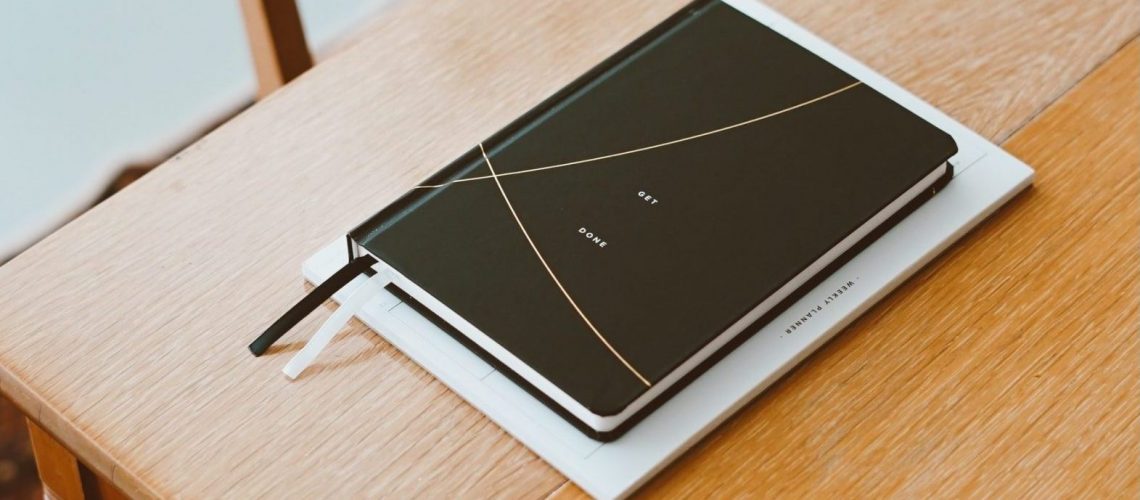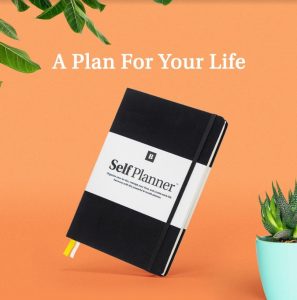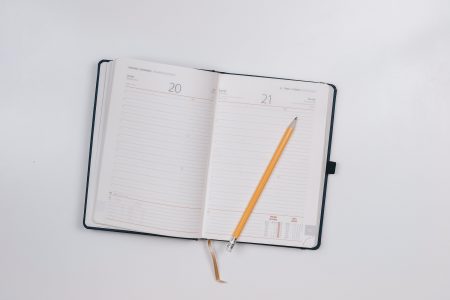Article Sections
Most of us could use an effective ADHD Planner.
ADHD is an overwhelming disorder, constantly bombarding our minds with distractions. So it’s no wonder that within the whole overflow of information, we tend to forget schedules, planned events, assignments, and work deadlines.
On top of distractions, our ADHD brains also have to compete with hyperfocus. In hyperfocus, we lock in a razor-sharp focus that is seemingly unending and unyielding. Hyperfocus will ignore anything outside of the task that is driving our hyperfocus.
To keep us organized and focused on the correct task at the correct time, we need an ADHD Planner. We need more than just a to-do list, although a to-do list is a part of an effective ADHD planner. We need an ADHD planner that creates a comprehensive system catered to our individual needs.
An example of a comprehensive ADHD planner is the Full Focus Planner by Michael Hyatt. What makes the Full Focus Planner comprehensive is the way the planner breaks down everything from the most important goals, to our daily plans.
Essentially, an ADHD Planner should be able to take our most important goals, and break them down in a top-down method. It should start with our most significant goals and break those down into smaller projects.
From the smaller projects, the ADHD Planner should be able to further break the projects down into groups of tasks. Then, the tasks can be allocated to time periods for planning, such as specific months and dates. Finally, those tasks can become a to-do list for a particular day.
I refer to the ADHD Planner as a top-down planning methodology because that mimics the role of our brain’s executive functioning. Executive functioning is our brain’s top-down cognitive ability to filter incoming information and make decisions based on the filtered information. This is an essential point because, with ADHD, we have impaired executive functioning.
Our impaired executive functioning is caused by a difference in the physical structure of our ADHD brains. The prefrontal cortex is the part of the brain that deals with executive functioning. Because ADHD is a neurodevelopment disorder, one of the main areas affected by ADHD is the deficient physical structure of our prefrontal cortex within the prefrontal lobe.
Another core ability handled by the prefrontal lobe is short-term memory. This trait of our ADHD brain is also affected. With ADHD, a common trait is diminished short-term memory. This makes concentration difficult and information retention even more difficult.
This symptom is also related to the reduced levels of crucial neurotransmitters, primarily dopamine and norepinephrine.
This is where the ADHD Planner comes into play to augment our executive functioning and short-term memory. Thus, the ADHD Planner acts as an extension of our executive functions and short-term memory.
For example, let’s take a meeting with your boss regarding a large project that has been assigned to you:
- Your boss will likely give you a broad overview of the project and the expected outcomes.
- In a top-down method, they may mention some ideas for breaking up the project.
- They may suggest some smaller steps that could be used to break down the larger project.
Since this is a meeting in real-time, we need to be able to take notes during the meeting. Later, after the meeting, we’ll need to brainstorm the main project. The goal is to develop a strategy to break down the larger project into smaller pieces.
After we break down the project into small pieces, we’ll need to further break down those small pieces into smaller task groups. Then, we’ll need to put a time frame around those smaller task groups and schedule them into monthly and daily task lists and goals.
After all of this planning, the last step is to reassess the plan and make sure it will accomplish the goals set by your boss. We’ll also need to make sure the project fits into your own set of goals, because this ensures that you feel challenged and enjoy your job.
Realistically, even if the goals don’t fit nicely into our own larger goals, we can find ways to reframe them. An example is a project that does not sound fun but could be part of your larger personal goal of getting a promotion at your company.
Another challenge is the daily tasks that show up on our desks that don’t fit any of the projects or goals that we have planned. These tasks still need to be completed; we just need to categorize and prioritize these tasks to fit into our broader planning.
As you can probably guess, there are plenty of places to lose focus and get distracted while planning. So, without some sort of ADHD Planner, we’ll probably end up reassessing the same tasks and sub-projects. We might also lose track of where all of this fits into our broader goals.
Further, while we are losing track of our larger project planning, we’re forgetting the suggestions made by our boss during the initial project meeting.
Even further, while we lose track of our assigned project, daily unplanned tasks are piling up on our desk. The daily tasks are piling up on our desk because we don’t have a readily available plan to prioritize the daily tasks efficiently.
Often, the consequences are an unorganized completion of tasks that is entirely out of order, and unfinished larger projects; Neither of which will get us that promotion.
So, where do we start? We grab a pen and notebook and start taking notes. We then organize these notes into a comprehensive and inclusive ADHD Planner. We could also do this on our laptop in project planning apps such as Asana or Trello.
Both digital and paper-based planners work just as well in creating an effective and personal ADHD Planner. Below are two lists, one for digital planners and another for paper-based planners, that I recommend.
Digital ADHD Planner Apps
– ClickUp
This project planning app integrates goals, projects, tasks, and documents into a well-designed interface. ClickUp also has an extensive list of apps that can natively integrate right out of the box. ClickUp’s website lists around 90 different app integrations. Additionally, ClickUp can import full projects from seven other apps such as Asana, Trello, and Todoist.
Another well-designed and versatile feature of ClickUp is its project views. A project can be viewed within a calendar, Gantt chart, list, or Board. This allows ClickUp to fit into any project management style easily.
Other useful features of ClickUp are mind maps, checklists, priority ranking, team integration, dashboards, and time tracking.
ClickUp includes a free plan that won’t ever expire and paid plans that include additional premium features. The first paid plan starts at $5 per month.
– Trello
This project and task management app has excellent team features and collaboration features. Trello’s app is well designed and is very intuitively laid out in a board view. The native board view will fit well with teams and companies that employ a scrum project management style. Trello also has a timeline, calendar, list, and dashboard view.
A unique feature of Trello is its power-ups. These are custom-made integrations that are designed exclusively for specific apps to interact with Trello. The power-ups can also be created by team members to provide additional and custom features.
Trello includes a free plan that won’t ever expire and several paid plans that include additional premium features. The first paid plan starts at $5 per month.
– LiquidPlanner
This project management and planning app is enormous in scope, and plans to be your one-stop shop for all project aspects. It includes an extensive array of features, including team member schedules, employee holiday and time-off scheduling, project time management, project collections management, advanced access control, and project change controls.
An intriguing feature of LiquidPlanner is its ability to automatically rebalance employee workloads to maximize resources. The app includes variable inputs that shape the resource optimization function.
LiquidPlanner includes a free plan that won’t ever expire and several paid plans that include additional premium features. However, the first paid plan is $15 per month.
– Wrike
This project management app is also large and all-inclusive. However, Wrike differentiates itself based on its high level of available customization. Like the other apps, Wrike includes a long list of app integrations.
However, Wrike’s stand-out feature is its API transparency. Wrike has a full developer resource center on their website that gives a complete and comprehensive overview of their API. After taking a quick glance at the developer resource webpage, it’s clear that Wrike’s API has ample security builtin for document exchanges and other team communications.
Wrike includes a free plan that won’t ever expire and several paid plans that include additional premium features. The first paid plan is $9.80 per month.
– Evernote
I included this app, and the app below, to provide some more modest selections that have all the necessary features for an ADHD Planner, but are far easier to use.
Evernote is an app that is similar to the idea of a digital notebook that can hold any kind of notation or information. It’s a blank canvas, ready for whatever style of notes are best for you. You can import documents, paste in pictures and charts, handwrite with a stylus, and of course, type in the information. The interface has similar features to most text editors when typing in information, such as formatted lists and tables.
The Evernote app also can scan documents, import webpages, and add images and audio.
However, one of its stand-out features is its language recognition technology. As stated on their website, Evernote can understand 28 typed languages and 11 handwritten languages. This leads to their second stand-out feature, Evernotes’s extensive search capability. Evernote can search almost everything, including PDFs, office documents, scanned documents, and handwritten notes.
Evernote is by far the best note-taking app.
Evernote includes a free plan that won’t ever expire and several paid plans that include additional premium features. The first paid plan is $7.99 per month.
– Todoist
This task management app is much lighter than the other project management apps on this list. Todoist is a blend between the larger project management apps and smaller to-do list apps. It is much more versatile and capable than most to-do list apps such as Google Tasks or iOS reminders, yet has a more personal feature set than Wrike, Trello, or LiquidPlanner.
Rather than focusing on large project management, Todoist has a stronger focus on personal utility. This is a perfect app for someone to keep track of their work as well as personal tasks.
Todoist has a well-designed and intuitive interface, combined with strong app integration with other popular apps. For example, an email in Outlook can be sent directly to Todoist as a scheduled task.
However, like the other apps, Todoist can still provide team collaboration and communication. Tasks can be grouped and assigned to any team member. Todoist also has a built-in workflow based on its Inbox, which allows new tasks to enter a queue before being categorized into a project or task group.
Todoist has a forever free plan and a paid plan priced at $3 per month. It’s worth pointing out that Todoist is the best-priced option on this list.
Paper-based Planners
– Full Focus Planner by Michael Hyatt
This planner is well organized and is based on Michael Hyatt’s book, Free to Focus. Michael Hyatt also offers a course that complements the Full Focus Planner, the Free to Focus productivity course.
The Full Focus Planner is a quarterly planner, with pre-formatted sections to list annual, quarterly, and weekly goals. After the goal setting, the planner moves into three months of non-dated pages. Finally, the non-dated pages are pre-formatted into daily pages, weekly review pages, and monthly review pages.
This planner’s organization and foundation create the best example of a solid personal ADHD planner. It starts with annual goals, then works its way to monthly, weekly, then daily planning. The planner is flexible enough to handle the unplanned tasks and projects that get dumped on our desks.
It is well worth your time to give this planner a look, as it would make a well-organized and attractive, personal ADHD Planner.
The base model of the Full Focus Planner is priced at $39.99.
– BestSelf Co. the Self Journal
This is another well-designed planner, which would work very well as an ADHD Planner. It is based on a similar theme of starting with your long-term goals, then working those goals down to the most immediate goals. This top-down goal planning is precisely what we talked about earlier in the article. It ensures that what we do daily is aligned with our broadest goals. This planner is well organized into this top-down goal approach to planning.
The BestSelf planner covers 6 months and has pre-formatted pages for daily, weekly, and 13-week goal planning. A unique feature of this planner is the additional pre-formatted templates. The BestSelf has templates for habit tracking, self-benchmarking, and self-reflection. These additional templates could be beneficial to ADHD planning by providing extra motivation and reflection.
The BestSelf Planner starts at $19.
This is a planner that I found in a completely random and non-related task. I was looking for some photos on Unsplash and ran across some pictures of journals and planners made by Stil. The images were beautiful, and so were the journals and planners. These planners are definitely more on the attractive side than many of the other planners on this list.
Beyond their design and style, they have function as well. The Get It Done planners from Stil are created for a 90-day planning time frame. This planner suggests starting with the biggest quarter goals rather than annual goals. That’s still fine, as a quarter is long enough to contain broad goals.
A stand-out feature of Stil’s Get It Done planner is its inclusion of health, personal, and work goals. I can see this being a healthy feature by allowing you to plan all of your current life goals in a single planner. Additionally, this feature can also force us to balance our work, personal, and health goals.
The Get It Done Planner from Stil is currently priced at $29.
– TUL Custom Note-Taking System
This is the planner that I personally use. The TUL Discbound Notebook planners are completely customizable. The main idea of these planner notebooks is based on the discbound feature. The pages attach to a disc that allows the pages to flip like a wire-bound notebook.
However, the plot twist here is that the TUL pages have punched holes with tiny slits between the paper edges and the holes. This allows the pages to be removed and easily placed back into the notebook without any moving parts. Thus, the TUL pages can be effortlessly removed, reorganized, and put back onto the notebook discs rather than forcing open a ring binder.
The next best part of the TUL discbound planners is the large selection of pre-formatted paper, blank paper, and other accessories. There’s even an option to purchase a TUL hole puncher to make any paper document insertable. The large selection of accessories that can be attached to the discs includes items such as rulers, small zipper pouches, tab dividers, and tape tabs.
Their paper selection includes packages such as lined and undated daily pages, blank graph pages, pre-formatted weekly and monthly planner pages, calendar pages, and to-do list pages. There’s also an assortment of different-sized discs and notebook covers to further customize your personal ADHD Planner.
The TUL Discbound Note Planner starts at $9.99 for the most basic model. The higher-end version with a leather cover starts at $24.99. The very top-end version with a leather cover and a wireless charger built into the cover is currently on sale for $41.99. So, you could charge your phone just by placing it on the planner.
Article Wrap-Up
In closing, keep in mind that these planning tools vary significantly in features. You certainly don’t need all the features offered. So, find the tools that you are most likely to use. An unused planner is the worst planner attribute.
Also, you may find that a combination of both digital and paper planning works for you. Personally, I use the TUL planner with the Todoist app. For me, this works. I don’t manage a team, so the team collaboration features weren’t needed.
Also, you don’t need to use all the app features, even if they have numerous additional features. So, if a particular app seems useful, go for it. Use the app regardless of whether you are fully utilizing all the features.
With ADHD, this article gives you a blueprint of how a beneficial ADHD planner can look. There’s no need to get knee-deep in features that aren’t relevant when you only need to use a few features.
Conversely, don’t get an app or paper planner that is too simplistic for our ADHD planner needs. For example, we already know that a completely blank notebook will probably not be the best choice. Instead, an option with some built-in structure and guidance will prove to be much more beneficial in planning.
With ADHD, it is easy to become overwhelmed with too many options. So just use the features that you need.
One last thought to keep in mind. A good personal ADHD planner should augment and extend our abilities. The planner should be able to assist our short-term memory by easing the information load. The planner should allow us to transfer some of the responsibility of information storage to the planner. The same is true for broad and complex goal planning. The planner should augment our brain’s top-down cognitive abilities.
By the way, if you like handwriting your notes and plans, take a look at my other website. It dives deep into cursive and fountain pens, which are another hobby of mine.
This post may contain affiliate links that earn us a commission when you buy through our product links. For our full disclosure, please visit our Privacy Policy page.






